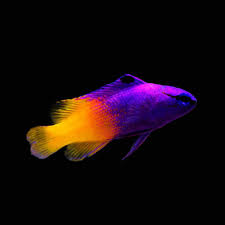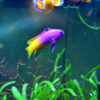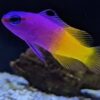The Evolution of the Dragon Image in Chinese Painting Schools

In Chinese culture, the dragon is a powerful and revered symbol, rich with centuries of history and meaning. As one of the most prominent motifs in Chinese art, the image of the dragon has undergone significant evolution through various historical periods and artistic schools. Known for its association with imperial power, celestial authority, and good fortune, the dragon has been depicted in countless forms within Chinese paintings, from imperial commissions to folk art. Understanding the development of the dragon’s imagery in Chinese painting reveals not only the changing styles and techniques of Chinese artists but also provides insight into the broader cultural, religious, and political shifts in China over the centuries.
The Dragon in Early Chinese Art: Origins and Symbolism
The dragon first emerged as an icon in early Chinese art and culture, with evidence of its presence in Bronze Age and Neolithic artifacts dating back to around 3000 BCE. Initially, dragons were depicted in a more stylized form in ancient jade carvings, pottery, and ritual bronzes. These early representations of the dragon were often abstract and less detailed compared to later depictions in Chinese painting, yet the creature was already associated with powerful symbolism.
The Predecessors of the Dragon in Early Art
In early Chinese ceramics and bronze vessels, dragons were depicted as stylized serpentine creatures with elongated bodies and angular features. These early dragons were closely associated with nature and spirits, often representing the forces of water, fertility, and the elements. In this context, the dragon was not solely a representation of a mythical creature, but rather a spiritual symbol of cosmic power and divine influence.
As the dragon gradually became a more established figure in Chinese culture, it began to take on additional meanings. In the Zhou Dynasty (1046–256 BCE), the dragon was firmly established as a symbol of the emperor, with emperors often referring to themselves as the “Son of Heaven.” This association of the dragon with the imperial family set the stage for its role in subsequent artistic schools, as artists began to depict dragons with greater detail and ornamentation in the paintings and artworks of the Tang, Song, and Ming dynasties.
The Dragon’s Role in the Tang Dynasty: The Emergence of Naturalism
The Tang Dynasty (618–907) represents one of the first major periods in Chinese art history when the depiction of dragons evolved significantly. This period witnessed the development of greater naturalism in Chinese art, with an increasing emphasis on realism and detail. Artists during this time sought to depict dragons as living creatures, often inspired by real-world animals like snakes and lizards.
The Dragon as a Symbol of Imperial Power
During the Tang Dynasty, the dragon was increasingly associated with imperial symbolism. The Tang emperors used the dragon as a symbol of their divine right to rule, and it was often depicted as a majestic creature, powerful and benevolent. One notable feature of the Tang dragon was its elongated body, often shown coiled or ascending in the sky. These representations gave the dragon an ethereal, celestial quality, emphasizing its role as a divine being.
Artists during the Tang period focused not only on the physical features of the dragon but also on its expressive qualities. Dragons in Tang art were often depicted with a dynamic posture that conveyed motion, strength, and majesty. As Chinese painting schools continued to evolve, the dragon’s portrayal would continue to refine its naturalistic elements, leading to even more detailed and symbolic representations.
The Song Dynasty: The Dragon as a Symbol of Prosperity and Balance
The Song Dynasty (960–1279) represents a period of profound cultural development in China, particularly in the field of landscape painting and court art. During this period, the image of the dragon underwent significant changes, as artists increasingly portrayed it as a symbol of prosperity and cosmic balance.
Integration with Landscape Painting
In the Song Dynasty, the dragon’s role in art shifted, with the image of the dragon often integrated into landscape paintings. Song artists, such as Zhang Zeduan and Liang Kai, began depicting the dragon not just as a creature of myth, but as part of the natural world, often set against dramatic landscapes, rivers, and mountains. In these paintings, the dragon’s fluid form seemed to flow seamlessly into the environment, emphasizing the harmony between the natural world and the cosmic.
The Song dragon also became more stylized, with the body of the creature often flowing like a serpent through clouds or water, creating a sense of balance between earth and heaven. This period also saw a reduction in the dragon’s fierce and aggressive traits, instead portraying it as a symbol of peace, prosperity, and good fortune.
The Dragon as a Benefactor of Good Fortune
In the Song Dynasty, the dragon’s symbolism was not only associated with imperial power, but also with the idea of luck and blessings. As prosperity and the flourishing of the civil service became central to Song society, the dragon was often depicted as a generous benefactor, bestowing prosperity upon those who invoked its image. In court art, dragons were frequently painted on ceremonial robes and imperial seals as a sign of the ruler’s authority and good fortune, while scholar-artists portrayed dragons as catalysts of wealth and success in personal and public life.
The Ming and Qing Dynasties: The Dragon as the Ultimate Symbol of Imperial Authority
The Ming Dynasty (1368–1644) and the Qing Dynasty (1644–1912) saw the image of the dragon reach its zenith in Chinese painting, particularly in the imperial art produced for the court and ceremonial purposes. The dragon during these two periods was often depicted in its most regal and majestic form, a creature that symbolized not only the emperor’s heavenly power but also the spiritual authority that was central to dynastic legitimacy.
The Dragon’s Appearance in Court Art
In the Ming and Qing periods, the dragon’s depiction in court painting became highly stylized. Dragons were frequently portrayed with exquisite detail, emphasizing their graceful forms and elegant movements. In many Ming and Qing paintings, the dragon’s body was shown as a serpentine coil that intertwined with the clouds, water, and other elements, giving it a sense of cosmic energy and divine grace. These dragons were often painted in gold leaf or vibrant colors, and they frequently served as symbols of the emperor’s ability to govern and bring harmony to the empire.
The dragon was also often depicted in imperial robes, and these images were carefully created to serve as official symbols of imperial authority. These courtly depictions were used not only for ceremonial purposes but also for propaganda—reminding the public of the emperor’s divine status and reinforcing the image of the emperor as the Son of Heaven.
Modern Depictions of the Dragon: Cultural and Artistic Revival
In modern times, the image of the dragon continues to hold significance in Chinese art, particularly with the resurgence of interest in traditional cultural symbols. Contemporary artists, while often blending modern techniques with traditional symbolism, still use the dragon as a representation of power, mysticism, and divine protection. In modern Chinese painting, dragons may appear in new contexts, representing cultural continuity and the revival of Chinese tradition in the face of globalization and modernization.
The Dragon in Folk Art and Popular Culture
In addition to high art, the dragon continues to appear prominently in Chinese folk art and popular culture. Folk painters often depict dragons in more playful and accessible forms, with a focus on their role as lucky symbols. Whether featured on ceramic plates, painted scrolls, or festive decorations during celebrations like the Chinese New Year, the dragon remains a symbol of good luck and fortune that transcends the boundaries of imperial court art.
Conclusion: The Enduring Legacy of the Dragon in Chinese Painting
The evolution of the dragon image in Chinese painting schools reveals its journey from mystical and abstract representations to highly detailed and naturalistic depictions. From early bronze carvings to imperial court art of the Ming and Qing Dynasties, the dragon has been reinterpreted through countless artistic traditions. Each artistic school—whether focusing on naturalism, balance, or imperial power—has contributed to the rich and evolving representation of the dragon as a cosmic force, protector, and symbol of good fortune.
As China enters the modern age, the image of the dragon remains an enduring symbol of cultural pride, spiritual significance, and artistic excellence. Its portrayal in Chinese paintings continues to evolve, reflecting the dynamic nature of Chinese art and its capacity to adapt to the changing tides of history while still holding onto the ancient traditions that have shaped its identity for millennia.


